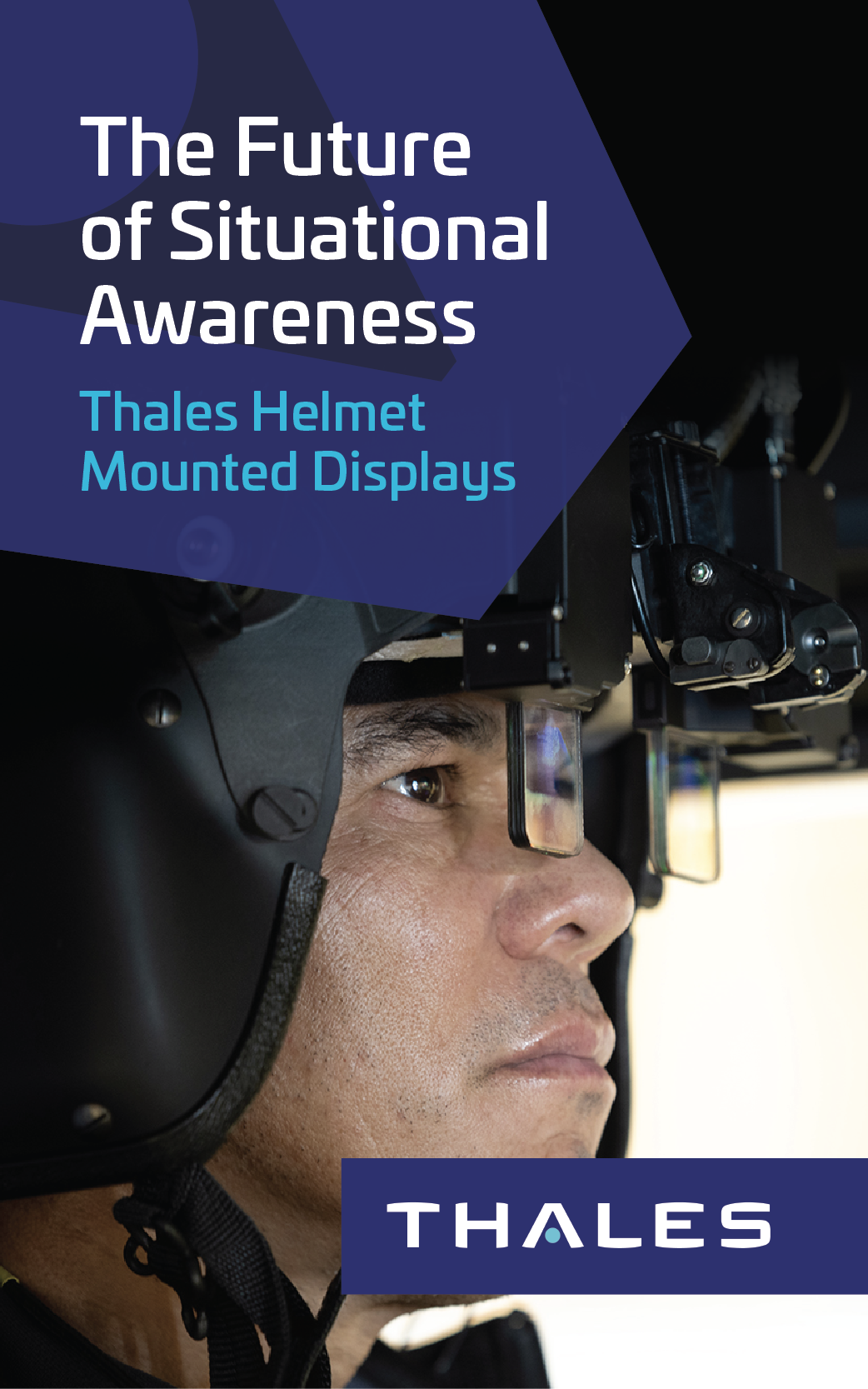Racing Against Technology
Tech Talk / By Mr. David B. Cripps: We in Army Aviation are engaged in a consumer electronics technology footrace, and we’re falling further behind. The pace that new products with creative functions & capabilities come to the market by far exceeds the pace that “the system” can formally assess and authorize their use. And sometimes these new electronic devices may have functionality that might be attractive to bring aboard aircraft to add to or enhance mission capability. Examples include tablet computers with clever applications, Global Positioning System (GPS) receivers, compact digital video cameras, Automatic Dependent Surveillance – Broadcast (ADS-B)...
Learn MoreAllergic Rhinitis
Ask the Flight Surgeon / By MAJ Jason MacDonnell, M.D.: Q: Doc, I am experiencing symptoms of runny nose, itchy eyes, sneezing, stuffiness and fatigue. How should I treat my symptoms and do I need a waiver? FS: The symptoms you describe are consistent with allergic rhinitis (also called seasonal allergies or hay fever). Allergic rhinitis is a significant medical issue that affects nearly 1 in every 6 Americans generating almost $5 billion dollars in direct healthcare costs and over 2 million lost work days annually. This condition also poses a risk to the aviation community. The reduced sense of...
Learn More11th TAC Welcomes Home Soldiers in Support of NATO’s Kosovo Mission
Reserve Components / By BG Scott R. Morcomb: Over the past several years of U.S. Army involvement in the conflicts in Iraq and Afghanistan, one peace-support operation in Europe still holds great significance for the U.S. Army. BG Scott Morcomb, commanding general of the 11th Theater Aviation Command (TAC), greets his soldiers returning from an 11-month deployment to Kosovo in support of NATO’s KFOR mission, Mar. 7, 2016. / U.S. ARMY PHOTO BY CPT MATTHEW ROMAN, 11TH TAC PAO That mission is the North Atlantic Treaty Organization’s (NATO) Kosovo Force (KFOR) mission. NATO has been leading a peace-support operation in...
Learn MoreReady for the Future
Chief Warrant Officer of the Branch / By CW5 Allen R. Godfrey: The American People have entrusted the Army with the moral and ethical application of force. The nation expects and more importantly demands we WIN. I do not like a fair fight. We must always have the advantage. Our enemies will continue to be unpredictable and changing. The global demand for Army Aviation will only increase due to the ever-changing complex world. We must be agile and adaptive because our enemies will be. CW3 Donnie Goeppinger (center), a pilot with Company B, 1st Squadron, 104th Cavalry Regiment, 40th Combat...
Learn MoreA Final Message
Aviation Branch Chief / By MG Michael D. Lundy: This is my last note to the field as the 14th Aviation Branch Chief. It was truly my honor and privilege to be given the opportunity to serve with, for and beside you; the phenomenal Soldiers, DACs and leaders of this branch. MG Michael D. Lundy, U.S. Army Aviation Center of Excellence and Fort Rucker commanding general, congratulates graduates of the new Air Cavalry Leaders Course at the Seneff building, Ft. Rucker, AL, Nov. 20, 2015. / U.S. ARMY PHOTO BY KELLY P. MORRIS, USAACE PAO Without fail, you demonstrate daily...
Learn MoreNetworking on the Wings of Change
President’s Cockpit / By BG E.J. Sinclair, Ret.: Have to say, change is the name of the game as we open the Army Aviation Mission Solutions Summit inAtlanta April 28-30, 2016. There have been several changes in the senior leadership of Army Aviation. Attendees at the 2015 Army Aviation Mission Solutions Summit in Nashville, TN networking on the exhibit hall floor. / AAPI PHOTO BY RENÉ BIDEZ MG Mike Lundy just changed command at Fort Rucker three weeks ago with MG Bill Gayler, and MG Jim Richardson passed the baton at AMCOM to BG Doug Gabram in February! In addition,...
Learn More2016 Army Aviation National Award Winners
Mr. Lars Ericsson leads the Army’s Unmanned Aircraft Systems (UAS) Technical Management Division where he continues to provide superb leadership, responsible for managing all of the technical and systems engineering functions for a six billion dollar global aviation enterprise. He has provided flawless oversight of the research, development, system integration, test, production and life cycle engineering support for the Army’s entire UAS fleet (i.e., Gray Eagle, Sky Warrior A, Hunter, Shadow, Raven, and Puma). Additionally, he successfully led the teams conducting engineering efforts for several related UAS technology programs, such as the Army’s Ground Based Sense and Avoid (GBSAA) system,...
Learn More2015 Functional Awards
AAAA, together with the U.S. Army Aviation Center of Excellence (USAACE), recognized the 2016 National Functional Awards winners Feb. 3 during the annual Aviation Senior Leaders Forum at Fort Rucker, AL. AAAA’s President, BG (Ret.) E.J. Sinclair, and MG Michael D. Lundy, Aviation Branch chief and USAACE commanding general, were joined by CW5 A. Randy Godfrey, chief warrant officer of the branch; CSM Eric Thom, branch command sergeant major; and industry partners, association members and many of the branch’s senior commanders, chief warrant officers and non-commissioned officers to honor this year’s individual and unit winners. Thanks to the Aviation Center...
Learn More2016 Army Aviation Hall of Fame Inductees
CW5 Ned Hubard’s 31-year career in Army Aviation combined a unique mix of operational, research and development, and command and staff assignments with over 20 years in special mission units (SMUs), flying an amazingly diverse range of aircraft from UH-1s in Vietnam to piloting the first mission into Afghanistan in a Russian Mi-17. In fact, Hubard has over 13,000 flying hours in over 150 types of aircraft and helicopters, is basic airborne qualified and trained as a high-altitude-low-opening / high-altitude-highopening (HALO/HAHO) jumper. In the early 1980s, following the failed DESERT ONE Iranian hostage rescue mission, Hubard was recruited into Operation...
Learn MorePriorities
Branch Command Sergeant Major / By CSM Gregory M. Chambers: Service in today’s Army should not be taken as a job but as a profession. As the Army changes its structure, fields new equipment and establishes new programs to develop leaders in order to meet a sustainable readiness posture, professional Soldiers are essential for the Army to win in the complex environments of the future. A flight of six Black Hawks departs Lowe Army Heliport, Fort Rucker, AL, Feb. 12, 2015 to support the Ranger School at Fort Benning, GA./ U.S. ARMY PHOTO BY CPT KEN DOUGHER, 1-212TH AVN. It...
Learn More

















